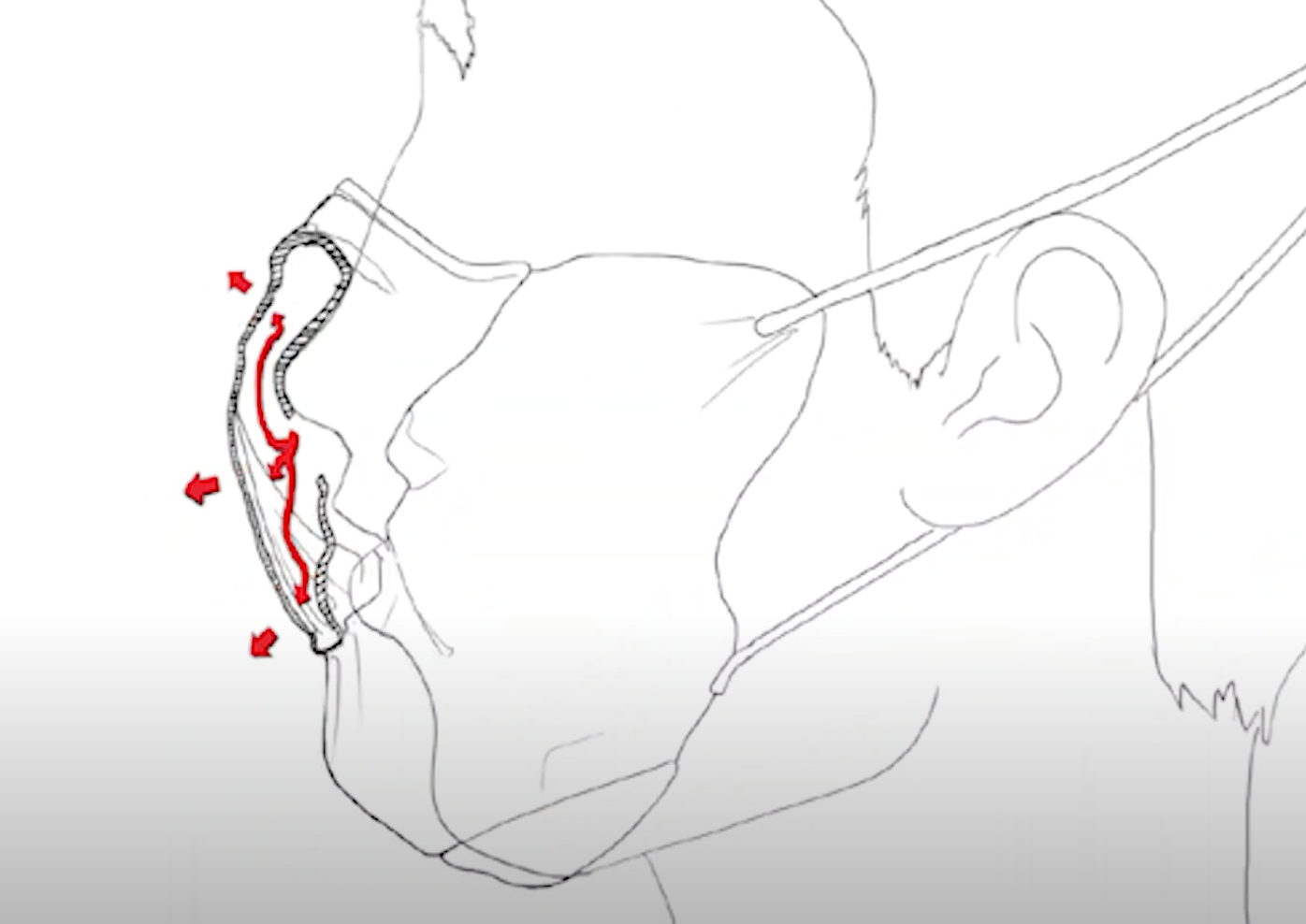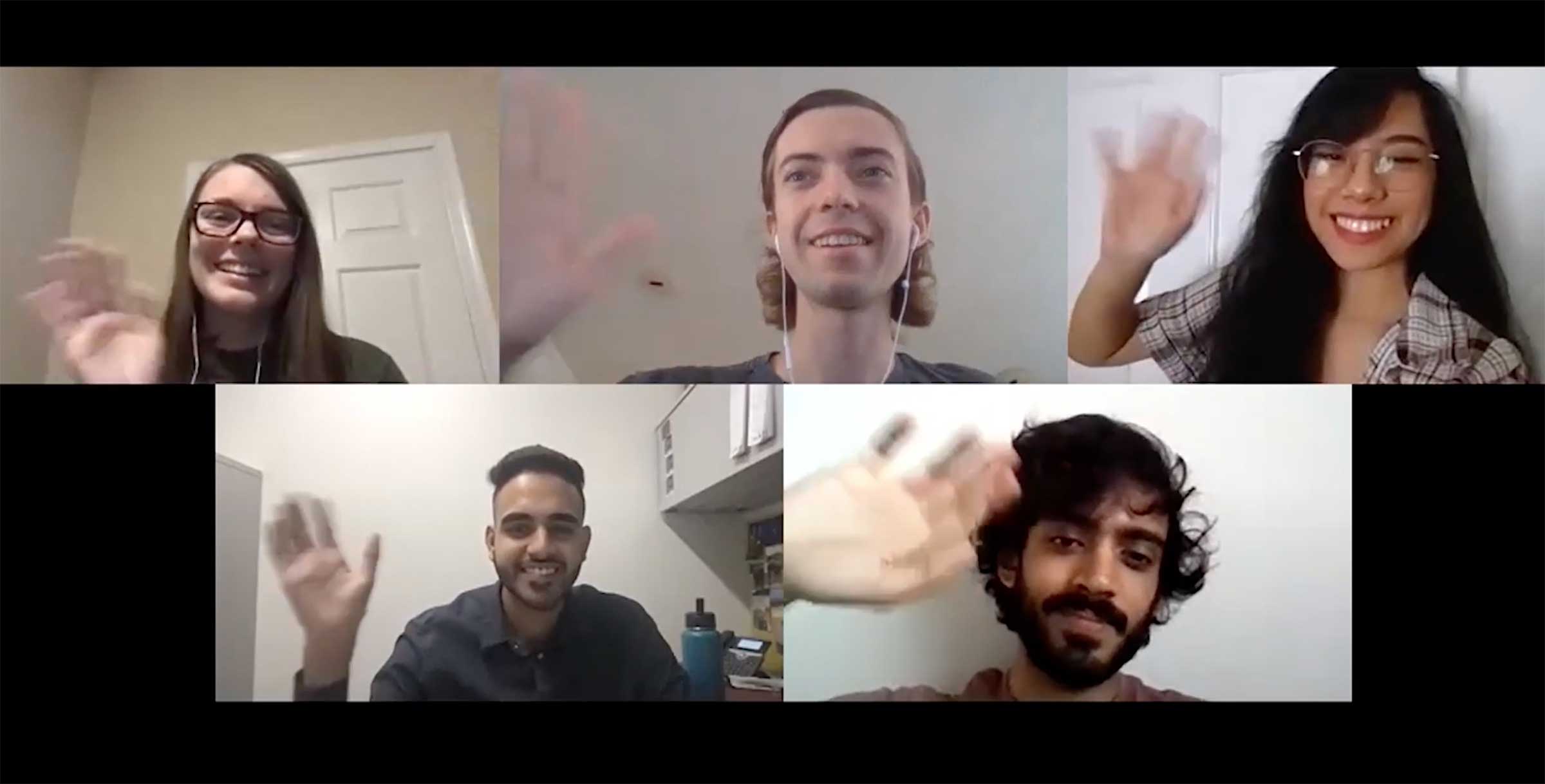ASU student team's fog-free mask design wins $1 million international competition

A student team from Arizona State University has won the million-dollar XPRIZE Next-Gen Mask Challenge to redesign the face masks used to prevent the spread of COVID-19 by making them more comfortable, functional and affordable.
The contest drew nearly 1,000 entries from young innovators in more than 70 countries around the world. The ASU team made the top five in early December; the grand prize was announced Tuesday.
“It hasn't been about money or even recognition for this team,” said ASU team leader Nikhil Dave. “It's been about doing what we can to impact our communities and to solve pressing challenges as they arise.”
The contest invited young adults ages 15 to 24 from around the world to shift the cultural perspective around mask-wearing behavior by developing the next generation of surgical-grade consumer masks.
The biggest problem the ASU team cracked was masks fogging up eyeglasses. Their Floemask features a bifurcated chamber design in which air exhaled from the nose is kept in a separate chamber from the face and mouth. Your face stays cooler, the air you breathe is fresher, and the flow of air stays away from glasses where it would otherwise cause fogging.
In the ASU Luminosity Lab team's bifurcated Floemask design, exhaled air is directed out the filter, rather than out of the top of the mask — preventing glasses from getting fogged up. Image courtesy of Luminosity Lab
“We went through several design iterations, but trying to create something that doesn't fog your glasses but doesn't leave hot air on the face is not an easy task for sure,” Dave said. “But I think the other thing is to ensure that whatever we're creating also has to be breathable, but also maintain the filtration efficiency needed to be an effective mask and preventing any sort of contagious pathogen.”
The mask was also designed to lift up easily for eating and drinking.
XPRIZE is a nonprofit organization that uses global competitions to crowdsource solutions to some of the world’s biggest challenges. The contest is sponsored by Marc Benioff, CEO and co-founder of Salesforce, and Jim Cramer, the host of "Mad Money" on CNBC.
The Sun Devils won $500,000 of the purse; two additional teams — Polair from John Hopkins University in Maryland and Naija Force from Abuja, Nigeria — will split the remainder. They will be connected to rapid manufacturing opportunities in the U.S. to accelerate production of their new mask designs. The ASU team has CAD files and fabric templates ready for mass-scale creation.
The team comes from ASU's Luminosity Lab, an interdisciplinary research and development lab driven by a hand-selected team of high-performing students.
XPRIZE submission video by Luminosity Lab
“I am incredibly proud of our students,” said the lab’s executive director, Mark Naufel. “These remarkable students competed against thousands of other teams internationally, knowing that they could contribute novel ideas for a unique mask, designed to resolve issues that they had personally experienced during the COVID-19 pandemic.
“Four years ago, Luminosity was created with an aspiration to impact society and a belief that our students are capable of achieving anything. By enabling our students with the agency to lead their own research and development efforts, they have continued to demonstrate their ability to innovate through the development of this prize-winning, next-generation mask that has the potential to impact countless lives. It is an honor to work with the students of ASU’s Luminosity lab, and I have no doubt that these students will go on to be the leaders and innovators of this generation.”
Dave credited ASU’s approach to innovation for their success.
“If it wasn't for ASU, frankly, we wouldn't think the way that we do,” he said. “And I don't think we would even be in a situation where we could apply for something like this. And so we're grateful to ASU as well, and we're happy to show off the fact that we are No. 1 in innovation.”
In addition to Dave, a student regent on the Arizona Board of Regents and an undergraduate earning a double major in neuroscience and innovation in society, the Luminosity Lab team includes John Patterson, a graduate electrical engineering student; Jerina Gabriel, an undergraduate graphic design student; Katie Pascavis, an undergraduate mechanical engineering student; and Tarun Suresh, a graduate industrial engineering student.
The Luminosity Lab team is (clockwise from top left): Katie Pascavis, an undergraduate mechanical engineering student; John Patterson, a graduate electrical engineering student; Jerina Gabriel, an undergraduate graphic design student; Tarun Suresh, a graduate industrial engineering student; and team leader Nikhil Dave, an undergraduate double-majoring in neuroscience and innovation in society. Photo courtesy of Luminosity Lab
Top image: An ASU student models the COVID-19 mask created by the Luminosity Lab team. It was named the winner of the $1 million XPRIZE Next-Gen Mask Challenge; the team will get $500,000 of the purse. Photo courtesty of Nikhil Dave
More Science and technology

ASU-led space telescope is ready to fly
The Star Planet Activity Research CubeSat, or SPARCS, a small space telescope that will monitor the flares and sunspot activity of low-mass stars, has now passed its pre-shipment review by NASA.…

ASU at the heart of the state's revitalized microelectronics industry
A stronger local economy, more reliable technology, and a future where our computers and devices do the impossible: that’s the transformation ASU is driving through its microelectronics research…

Breakthrough copper alloy achieves unprecedented high-temperature performance
A team of researchers from Arizona State University, the U.S. Army Research Laboratory, Lehigh University and Louisiana State University has developed a groundbreaking high-temperature copper alloy…



